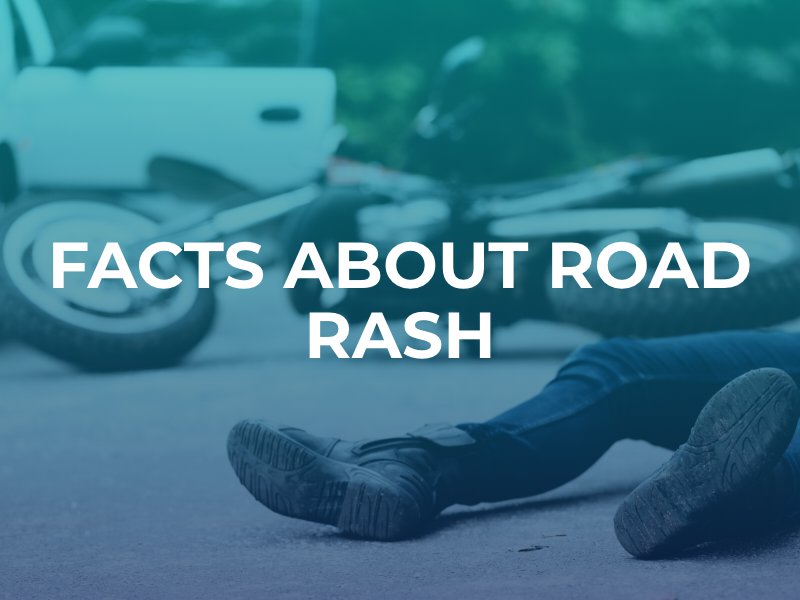Facts About Road Rash
Road rash is an injury that can occur anytime a person’s skin comes into contact with the road, sidewalk, or any other type of pavement. Most commonly, we associate road rash injuries with bicycle accidents and motorcycle accidents. Here, we want to examine some of the most common facts about road rash injuries that you need to be aware of. If you or somebody you care about has sustained road rash injuries as a result of the negligence of another driver, you need to speak to an attorney who can help you recover compensation for your injuries.

How Does Road Rash Occur?
Road rash is a term used to describe the type of skin abrasions or lacerations that individuals can sustain as a result of certain types of vehicle accidents. Typically, these incidents can occur anytime the skin comes into direct contact with an abrasive substance, such as asphalt, pavement, gravel, or concrete. As an individual drags along these surfaces, their skin can be cut or peeled away as a result.
The severity of road rash injuries depends on various factors related to a particular crash, including:
- The type of surface
- The speed at which a collision occurred
- How long the person slid across the surface
- Whether or not an individual was wearing protective gear
Can You Get Road Rash if You Have Long Pants and Long Sleeves?
Yes, it is entirely possible for individuals to get road rash if they are wearing long pants or long sleeves, though individuals wearing longer clothing are not as likely to sustain road rash as those wearing less protective clothing.
Depending on the speed of the accident and the surface involved, a collision could result in a person colliding with the roadway, and the roadway could tear right through articles of clothing.
Various Degrees of Road Rash
There are various degrees of road rash that individuals can sustain.
- First-degree road rash. This indicates a relatively mild case of road rash that will usually heal within a few weeks and will likely not leave any type of scars. This level of road rash may result in mild scrapes or scratches, but likely no deep open wounds.
- Second-degree road rash. This level of road rash is more severe and will likely leave moderate lacerations or abrasions. At this level, this will generally affect more than just the outer layer of skin, and there could be several areas where the skin is broken apart from road rash abrasions. Additionally, second-degree road rash can result in dirt, rocks, debris, or glass becoming embedded in the lacerations. Doctors will have to remove this debris and clean the area in order to prevent an infection. Scarring is more likely with second-degree road rash injuries.
- Third-degree road rash. This is the most severe level of road rash a person can experience. At this level, this will likely result in significant scarring and even some permanent loss of mobility in the area of the injury. In severe road rash cases, the underlying muscles, tendons, and ligaments could be exposed. This is considered an immediate medical emergency and should be treated by a doctor as soon as possible.
Can You Secure Compensation for Road Rash Injuries
Individuals may be able to secure compensation if they sustain a road rash injury caused by the negligence of another individual. For example, these injuries regularly occur as a result of motorcycle accidents. If another driver was responsible for causing a bicycle accident that led to road rash injuries, then the crash victim will likely be able to recover compensation from the at-fault party’s insurance carrier.